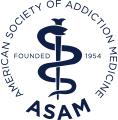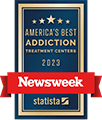Understanding Depression
Learn About Depression
Most people will go through periods of time where they experience sadness, despair, and frustration. However, when these emotions continue on for a long time, or happen with such regularity and severity that an individual’s functionality is interrupted, a person might be experiencing a depressive disorder. In many instances, those who develop depressive disorders attempt to self-medicate themselves from the psychological upset they are having through the use of alcohol and/or drugs. This can be highly unhealthy, and can lead to the development of a number of consequences, including the exacerbation of the symptoms and the development of a substance use disorder.
Depressive disorders encompass a number of disorders that include feelings of emptiness, sadness, and/or irritability that are often accompanied by intrusive cognitive and somatic changes. The most common types of depressive disorders are major depressive disorder, persistent depressive disorder, premenstrual dysphoric disorder, and substance/medication-induced depressive disorder:
Major depressive disorder: Those who have five or more of the below listed symptoms for the majority of the day almost every day within a two-week period of time, and who go through serious distress or functional impairment as a result, can meet the criteria for major depressive disorder:
- Depressed mood
- Recurrent thoughts of death or experiencing suicidal ideation
- Markedly diminished interest or pleasure in all or most activities
- Indecisiveness or diminished ability to think or concentrate
- Significant change in appetite or unintentional change in weight
- Feelings of worthlessness and/or excessive or inappropriate guilt
- Hypersomnia or insomnia
- Fatigue or loss of energy
- Psychomotor retardation or agitation
Persistent depressive disorder: The fifth and most recent edition of the Diagnostic and Statistical Manual of Mental Disorders (DSM-5) states that symptoms that were once linked to chronic major depressive disorder and dysthymic disorder have now been consolidated into persistent depressive disorder. At least two of the following symptoms, plus depressed mood for most of the day almost every day for at least two years, can be enough criteria to diagnose persistent depressive disorder:
- Sense of hopelessness
- Poor concentration and/or problems making decisions
- Poor self-esteem
- Fatigue or low energy
- Overeating or poor appetite
- Disrupted sleep patterns, including insomnia or hypersomnia
Throughout the two-year period of time that an individual has these symptoms, an individual who has persistent depressive disorder will not be asymptomatic for over two months.
Premenstrual dysphoric disorder: Premenstrual dysphoric disorder is marked by recurrent episodes of mood lability, anxiety symptoms, dysphoria, and irritability during a woman’s premenstrual phase of her menstrual cycle. Symptoms of this form of depressive disorder will lessen during or shortly after the start of a woman’s menses. To be diagnosed with this disorder, a woman must have at least five of the following symptoms, with at least one from each group:
Group 1
- Mood swings or increased sensitivity to rejection
- Anxiety, tension, and/or feelings of being on edge
- Increased irritability or anger
- Depression, hopelessness, and self-deprecating thoughts
Group 2
- Breast tenderness or swelling, joint or muscle pain, weight gain, and other physical symptoms
- Decreased interest in activities
- Feeling of being overwhelmed
- Problems with concentration
- Disrupted sleep patterns, including hypersomnia or insomnia
- Lethargy, fatigue, or significant lack of energy
- Significant change in appetite, including overeating or specific food cravings
Additionally, a diagnosis for this disorder also requires that the woman has had these symptoms during most of her menses throughout the past 12 months.
Substance/medication-induced depressive disorder: To be diagnosed with this disorder, one must exhibit the following:
- The disturbance does not happen exclusively during delirium, and the disturbance causes significant stress or impairment in important areas of functioning
- An individual experiences prominent and persistent depressed mood or significantly diminished interest and/or pleasure in all or most activities
- The disturbed mood is not better explained by a non-substance-related depressive disorder
- Evidence exists that these symptoms occur during or following substance intoxication or withdrawal, and the substance is capable of producing these symptoms
Depressive disorders can cause serious mental health issues, and can have significant negative effects on an individual’s well-being. However, these different forms of depression are treatable, and with the appropriate care, individuals who have developed major depressive disorder, persistent depressive disorders, premenstrual dysphoric disorder, or substance/medication-induced depressive disorder can defeat their upsetting symptoms and rebuild happy, healthy lives.
Statistics
Statistics of Depression
The National Alliance on Mental Illness (NAMI) reports that major depression impacts 14.8 million people throughout the United States, or approximately 6.7% of those aged 18 and older. According to the National Institute of Mental Health (NIMH), depression amongst adults is the most common between ages 18 and 25, followed by the 26 to 49 age group, and then rounded out by those aged 50 and older. Depressive disorders are most common in adult women than in adult men. For instance, the 12-month prevalence of a major depressive episode is 8.1% for women, while it is only about 5.1% for men.
Causes & Risk Factors
Causes & Risk Factors of Depression
The development of a depressive disorder can be impacted by a number of causes and risk factors that often work collaboratively. Below are some of the most common influences that can help determine if an individual is going to develop a depressive disorder:
Genetic: Depression has been known to have a strong genetic link. The American Psychiatric Association (APA) states that the risk of developing one of these disorders is 400 percent more likely amongst those whose parents or siblings have it.
Environmental: Adverse childhood events and stress are two of the most common environmental risk factors for the development of a depressive disorder, especially when an individual has a past that includes numerous types of these events or experiences.
Risk Factors:
- History of trauma
- Personal or family history of substance abuse
- Gender (depression is more common in women)
- Age (depression is most common amongst 18-29 year-olds)
- Loss of parent through separation, death, or divorce
- Negative affectivity
- Family history of depression
Signs & Symptoms
Signs & Symptoms of Depression
How a depressive disorder will look will be based on a number of things, including the type of depressive disorder that one is struggling with, as well as that individual’s history. Below are some of the most common signs that can show if an individual is battling a depressive disorder:
Behavioral symptoms:
- No longer participating in pleasurable activities
- Tearfulness
- Slowed speech and/or decrease in volume, amount, and inflection
- Angry outbursts
- Jitteriness
- Drop in occupational performance
Physical symptoms:
- Change in weight
- Headaches and stomachaches
- Change in appetite
- Hypersomnia
- Fatigue
- Insomnia
Cognitive symptoms:
- Distractibility
- Difficulty focusing
- Slowed thoughts
- Difficulty concentrating
- Racing thoughts
- Suicidal ideation
- Indecisiveness
Psychosocial symptoms:
- Feelings of sadness, shame, guilt
- Irritability
- Withdrawal from social interactions
Effects
Effects of Depression
Depressive disorders that remain untreated can lead to a variety of negative outcomes within an individual’s life, including:
- Suicide attempts
- Substance abuse and development of a substance use disorder
- Suicidal ideation
- Sleep disorders
- Self-harm
- Social withdrawal and isolation
- Engaging in dangerous, reckless, and risky behaviors
- Strained or ruined interpersonal relationships
- Diminished occupational performance, job loss, and unemployment
- Family discord
Co-Occurring Disorders
Depression & Co-Occurring Disorders
Those who have developed a depressive disorder are at a higher risk for also experiencing other co-occurring mental health disorders, such as:
- Obsessive-compulsive disorder (OCD)
- Anxiety disorders
- Posttraumatic stress disorder (PTSD)
- Eating disorders
- Substance use disorder







